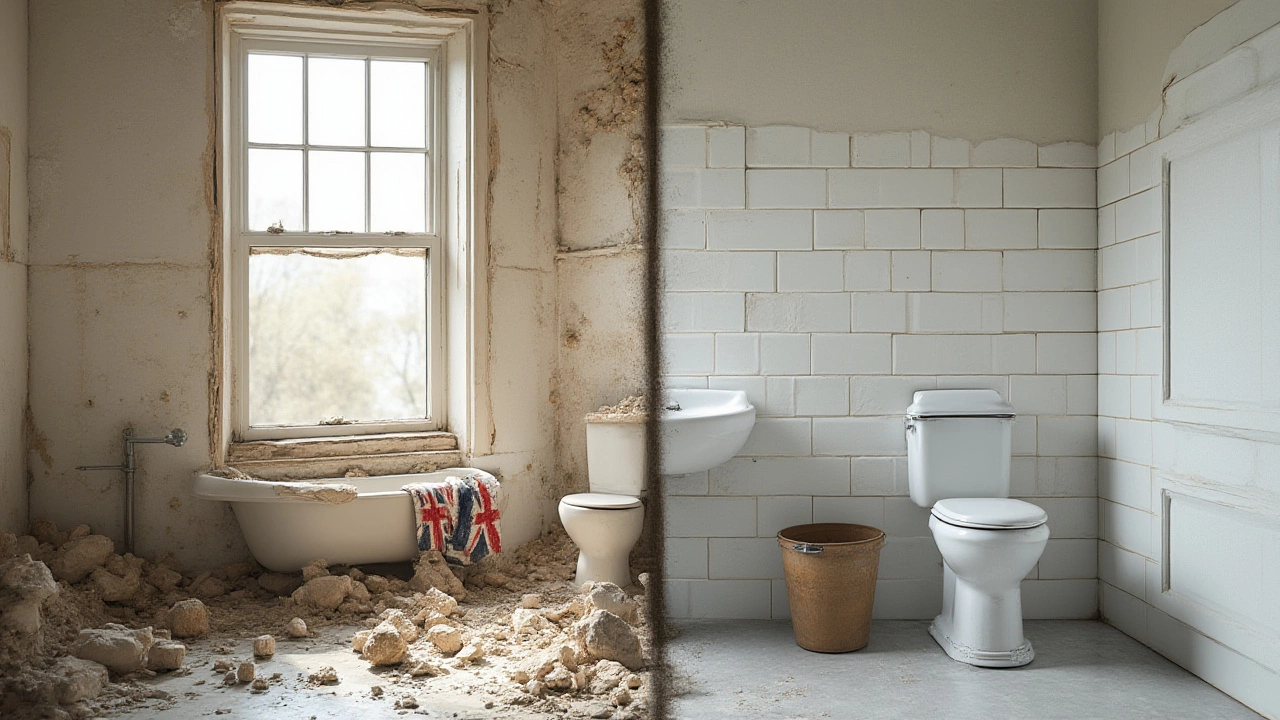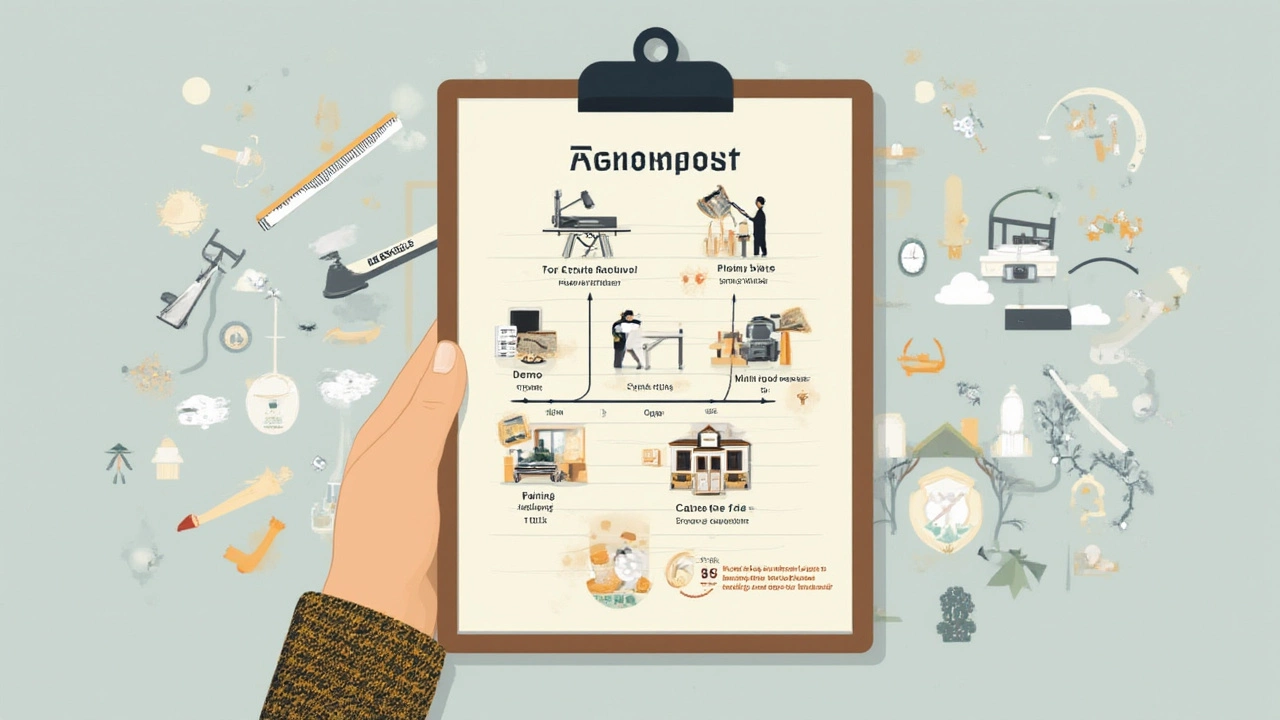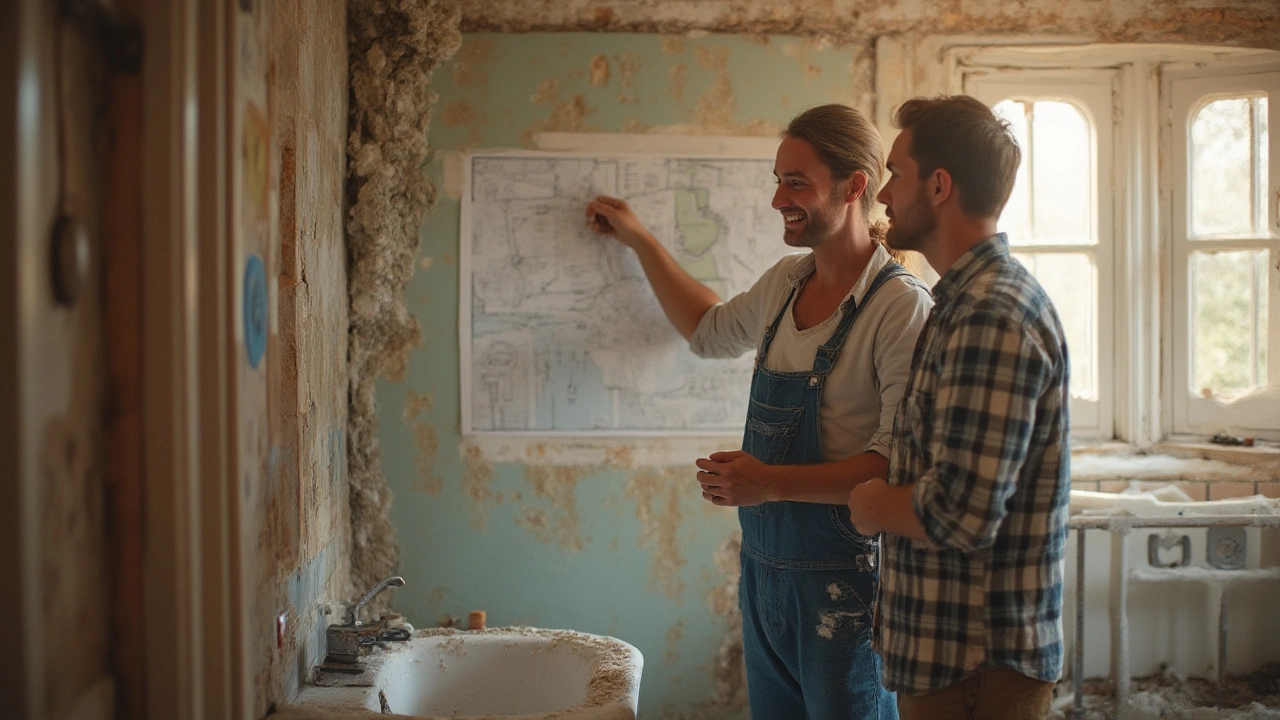Ever plan to use your shower, only to find the bathroom ripped down to studs—and the contractor says, “Just another week!”? Turns out, figuring out how long a small bathroom renovation should take is a bit more complicated than you might think. There’s the ideal timeline we all want, and then there’s reality—crammed with delays, hidden hiccups, and last-minute changes. Some say a small bathroom can be knocked out in a week. Others swear it takes at least a month with good luck. So, what’s the real answer? And is it possible to avoid endless dust and tradespeople showing up at 8 a.m. on a Saturday?
What Actually Influences a Small Bathroom Renovation Timeline?
Picture this: you’ve got a bathroom that’s about 5x8 feet, standard for a lot of apartments and older homes. Sounds like an easy project, right? But the list of factors that affects how long the renovation takes is about as endless as the choices between tile grout colors. The biggest one? Scope of work. If you’re simply swapping out a sink and a new coat of paint, you could be done in a weekend. But a "full gut" — where all drywall, fixtures, tile, and maybe even plumbing are replaced—can take a few weeks, give or take a busted water pipe or a lost shipment of tiles.
Let’s talk contractors. According to a 2024 Houzz report, the average small bathroom renovation, handled by professionals, takes 2-4 weeks. But that’s with clear plans, no changes, and materials ready to go. Got an older home? Add a week for unexpected surprises like bad wiring or ancient plumbing. Still thinking of DIY-ing the whole job? Even experienced weekend warriors report projects stretching from the promised “two weeks tops” into months—especially with work, family, and everyday life getting in the way.
The biggest timeline stretchers are usually:
- Custom or special order items (like ordered vanity or specialty tiles)
- Moving plumbing or electricity (if you want the sink across the room, pipes have to be rerouted)
- Permits and inspections—especially slow if your city requires multiple approvals
- Subcontractor scheduling—tile guys, plumbers, electricians rarely sync up perfectly
- Surprise repairs—water damage, mold, or uneven floors can add days (or weeks)
Fun fact: In a 2022 survey by the National Kitchen & Bath Association, 64% of homeowners reported renovation projects took longer than planned. The most common reason? Delays in getting materials (thanks, global supply chain issues).

The Step-by-Step Timeline of a Typical Small Bathroom Renovation
Here’s where things get real. Forget vague promises. This is how the most common renovation timeline shakes out, assuming you’ve got everything ready and use professionals:
| Renovation Step | Estimated Time |
|---|---|
| Design & Planning | 1-2 weeks (overlaps with ordering materials) |
| Ordering & Delivering Materials | 2-6 weeks (depends on products) |
| Demo & Preparation | 1-2 days |
| Rough Plumbing & Electrical | 2-4 days |
| Inspections (if needed) | 1 day (may vary with city) |
| Install Backerboard, Drywall, Subfloor | 1-2 days |
| Tiling (walls/floor) | 2-4 days |
| Grouting & Waterproofing | 1 day |
| Paint or Wallpaper | 1 day |
| Install Fixtures (vanity, toilet, tub, etc.) | 2-3 days |
| Final Electrical & Plumbing Hookups | 1-2 days |
| Final Inspections/Touch-ups | 1 day |
Add it all together—excluding material lead times—you’re looking at about 2, maybe 3 weeks, of actual hands-on work. But real-life jobs almost always stretch to 4 or 5 weeks. Need custom-made glass shower doors? Expect another 7-10 days, minimum, after everything else is finished.
The sneaky thing? Preparation and ordering are often what hold people up the most—if your vanity or flooring gets stuck in transit, you’re stuck waiting, no matter how fast your team works. And city inspections aren’t known for being quick, either. Want a quick tip? Never start demo unless all key fixtures are physically on site. It’s tempting to get rolling, but staring at an empty room while waiting for a bathtub gets old fast.

Tips, Pitfalls, and Setting Realistic Expectations
If you dream of a fast, painless bathroom remodel, here’s what makes it faster (or at least less painful):
- Keep the layout the same (don’t move plumbing if you can avoid it)
- Choose in-stock materials — specialty orders are wildcards right now
- Line up every trade (plumber, electrician, tiler, painter) before starting demo
- Estimate time yourself, then add 25%—just in case
- Double-check measurements before you order anything
- Have backup shower access (ask a neighbor, join a gym, or buy that camping shower for emergencies)
Things that throw off schedules? Changes to the plan mid-way, missing parts, finding water or termite damage, or “forgotten” steps (like patching walls before tile). One real-world example? A friend swapped a standard tub for a walk-in shower and forgot about moving the drain. That cost extra plumbing work, a re-inspection, and a lost week. Stuff like this happens a lot more than you’d think.
Expect a mess. Even the best pros generate serious dust and debris, and neighbors might not love the noise. Seal doors with plastic sheets, use dust barriers, and if your ventilation is old, cover up vents to keep stuff from circulating. Keep pets out—they find demo irresistible and will try to “help.”
Want to avoid going off-schedule? Avoid ordering online from places with vague delivery windows. Double check your contractor’s references—it’s worth asking directly if they finish jobs on time or if they tend to “juggle” between different houses. When you’re ready to start, ask for a daily schedule (not just a general finish date). Seeing what’s supposed to happen every day can make the process less mysterious, and it’s way easier to track actual progress—so you have a realistic sense if things are slipping.
There’s a reason so many home-reno shows block off a full four weeks (sometimes more) for one bathroom. Even small spaces are full of surprises, and almost everyone underestimates lead times and complexity. If you mentally plan for a 4-6 week project but actually finish in three, it feels like a win. But more than one news site has reported legal complaints where the original “one-month” job dragged into three to six—especially when permits or custom items are in the mix.
So what’s the real answer to "how long should a small bathroom renovation take?" If you keep the plan simple, materials standard, and the pros lined up, 2-3 weeks of hands-on work is possible, but most folks hit a full month, once you count real-life delays. More complicated projects or historic homes? Don’t book that housewarming party until you see grout in the corners and the last outlet cover screwed in. That’s when you’ll know you’re really “almost done.”
